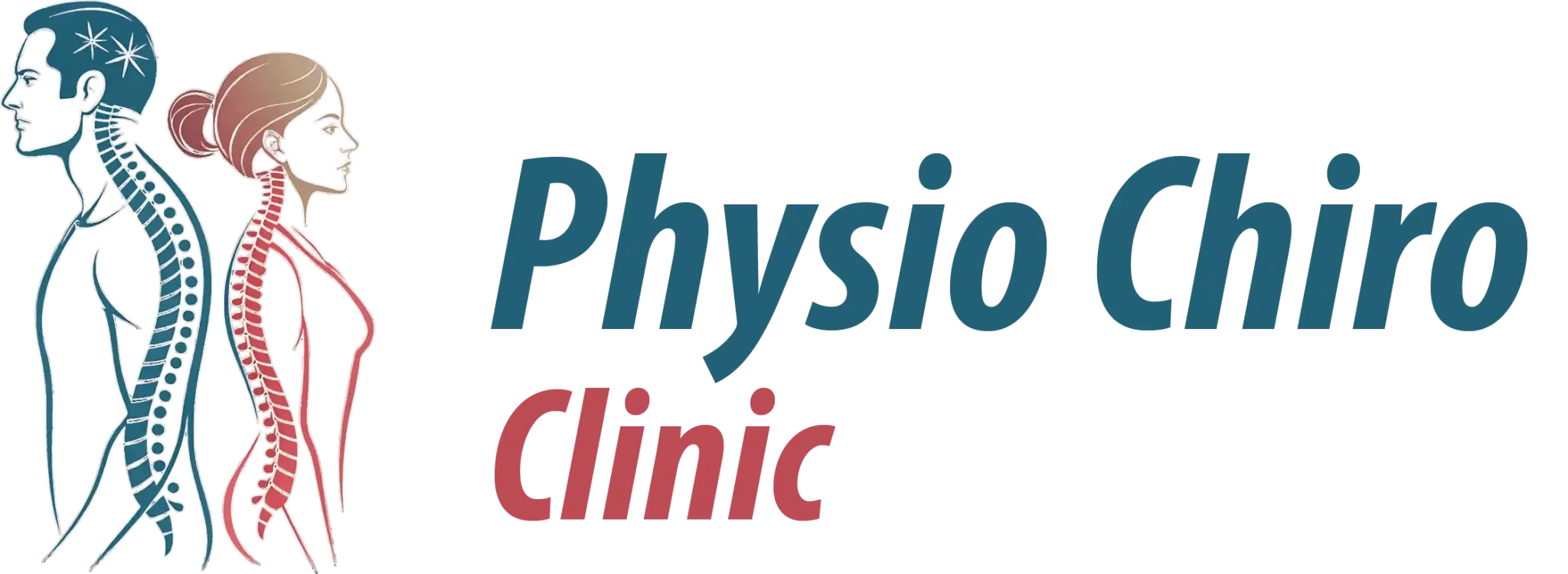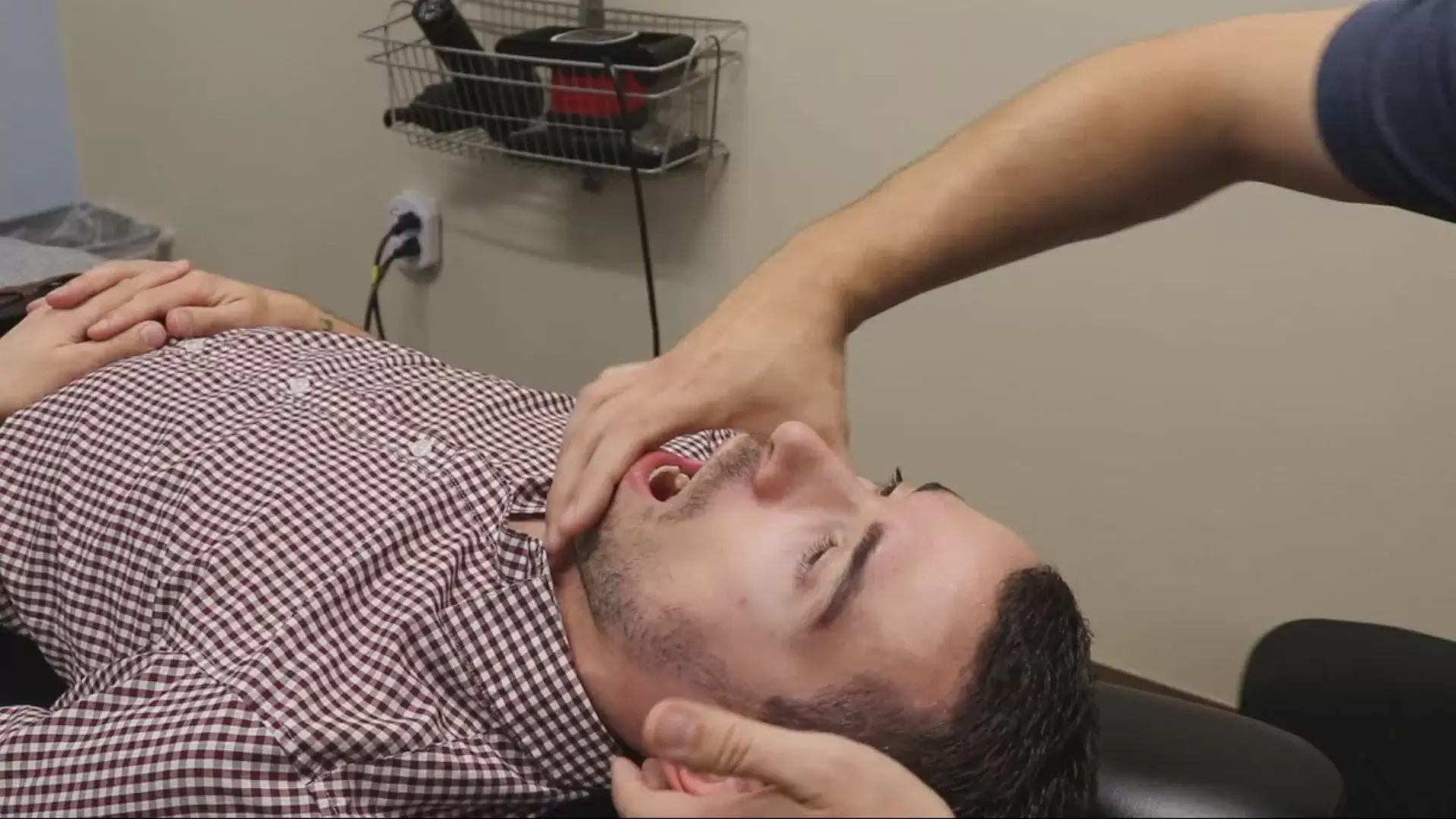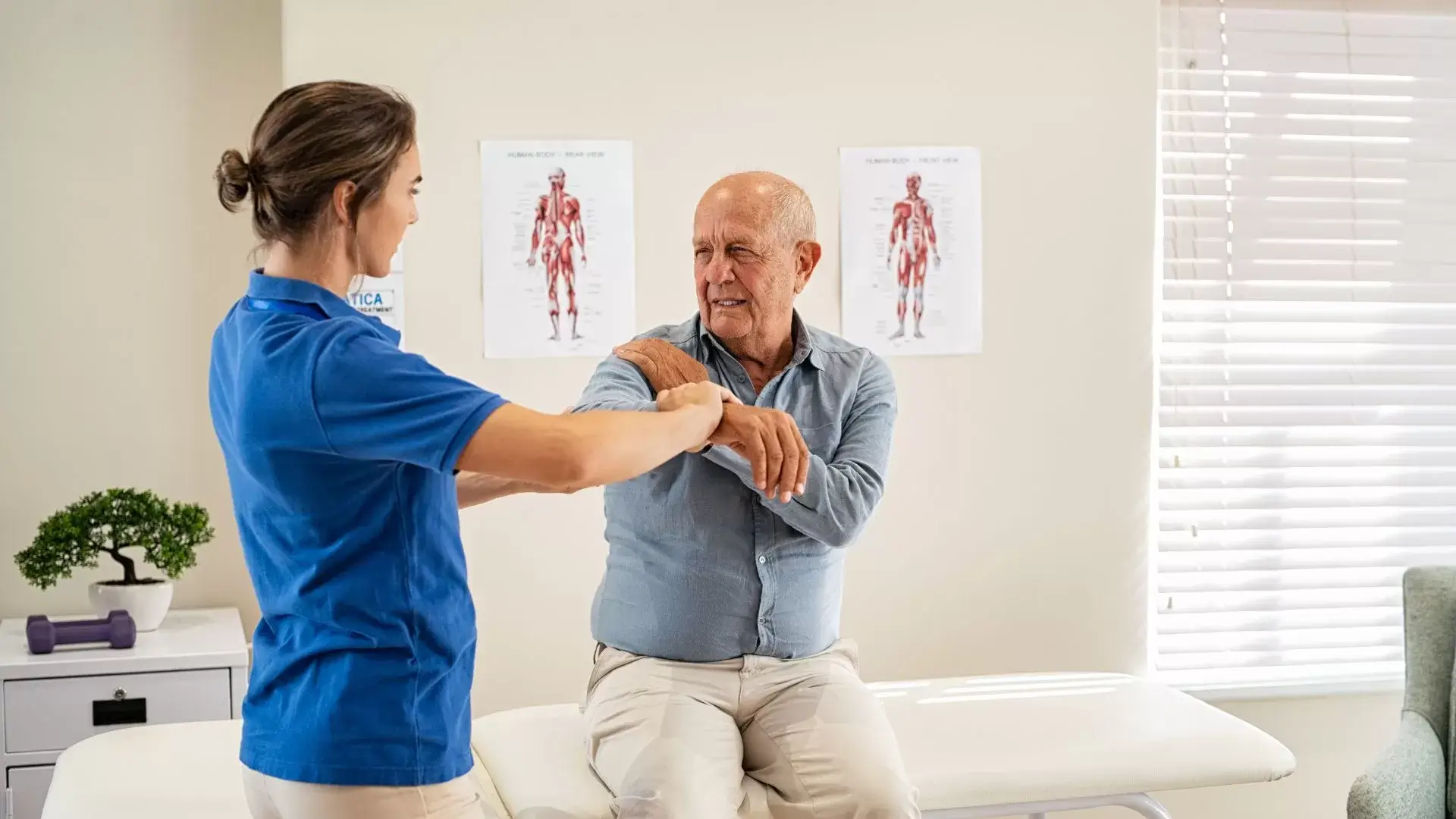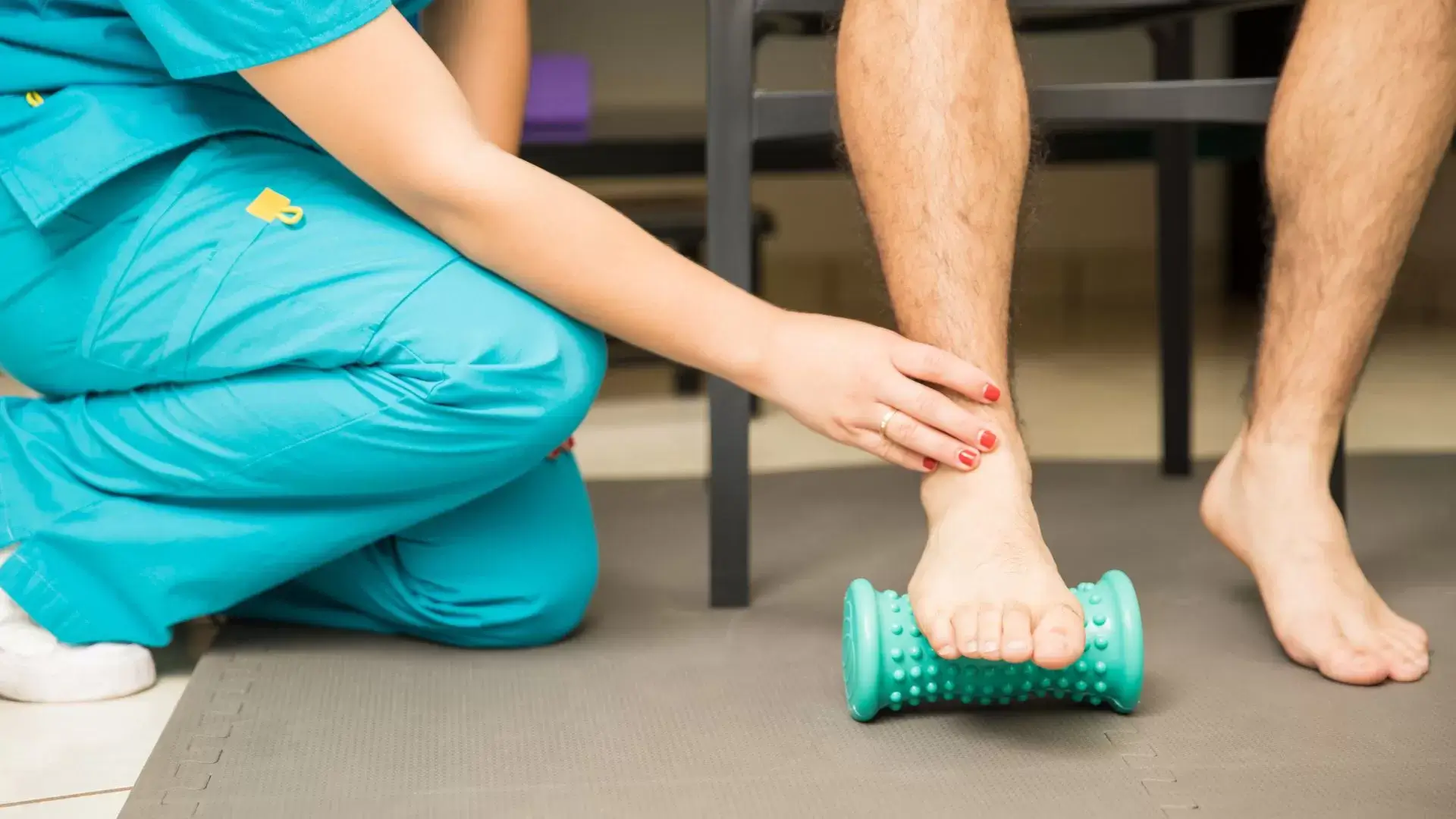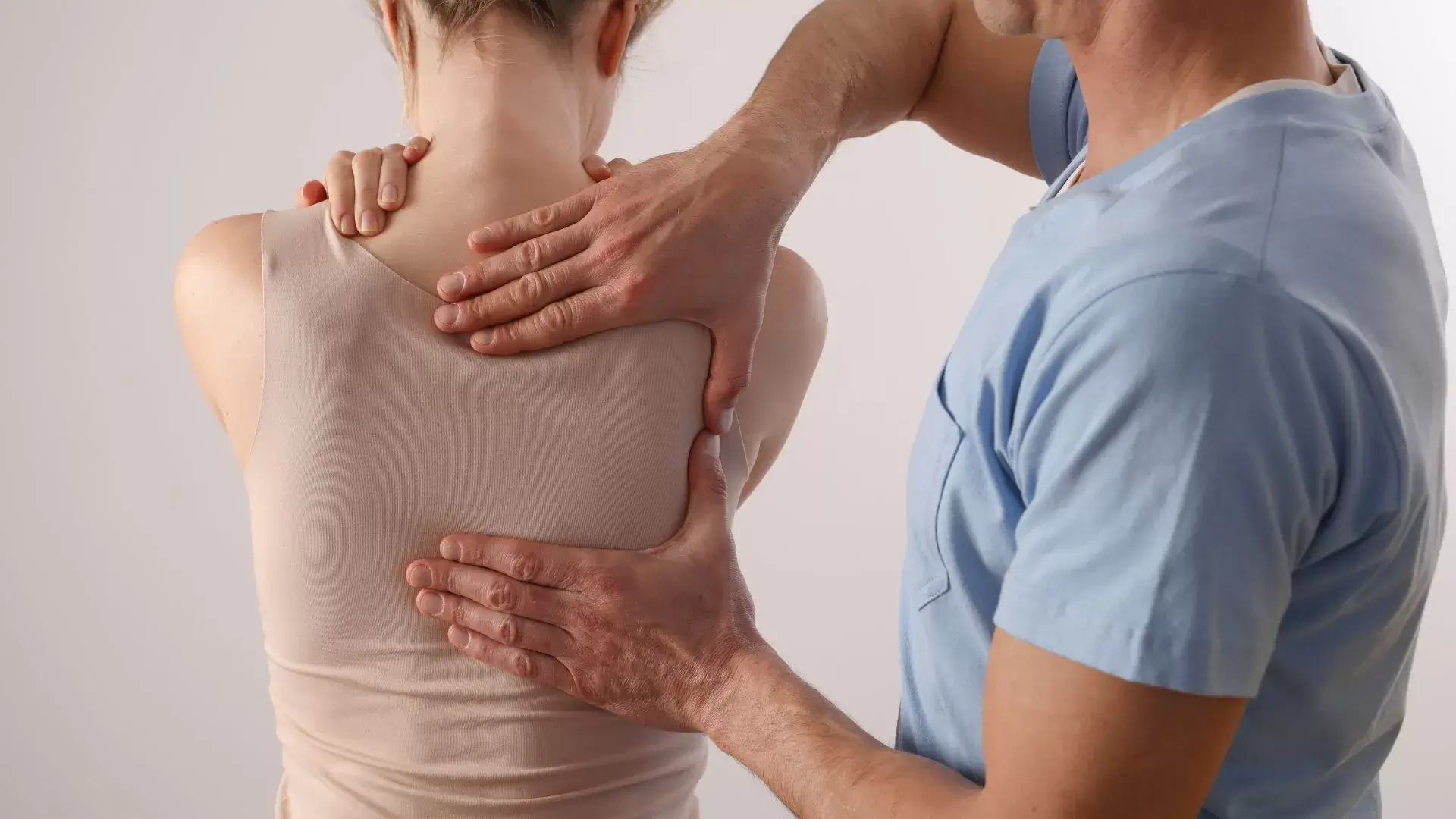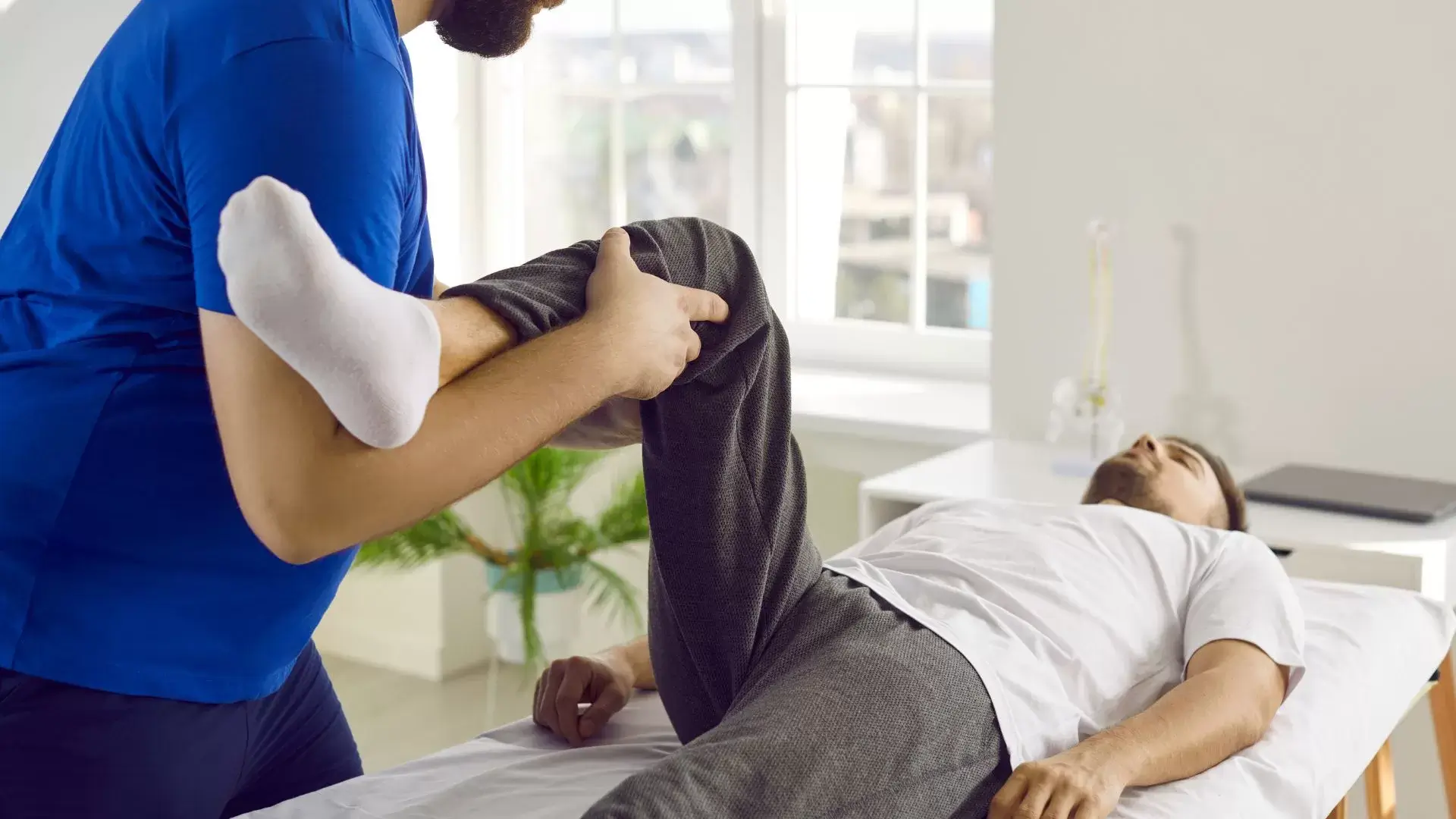Chiropractor for TMJ in Mississauga If you’re seeking a chiropractor for TMJ issues in Mississauga, we’re here to help. Our Expert Practitioners in Mississauga’s approach combines chiropractic care and specialized therapies tailored to alleviate jaw pain and enhance function. We focus on addressing the root causes of your discomfort, using techniques like joint mobilization and myofascial release. Together, we’ll create a personalized treatment plan that may also incorporate lifestyle adjustments for long-term relief. We’re committed to supporting your journey towards improved well-being, and there are more insights to explore that can further aid your understanding and recovery. About Our Physiotherapy and Chiropractic Services At Mississauga Physio Chiro Clinic, we offer extensive physiotherapy and chiropractic services designed to effectively address TMJ issues and enhance overall well-being. Our team specializes in treating TMJ disorders and temporomandibular joint dysfunction through a combination of physical therapy and chiropractic care. We recognize the complexities of TMJ treatment and utilize a variety of effective techniques, including manual therapy, myofascial release, and trigger point therapy. These methods are tailored to target the underlying causes of discomfort and pain associated with TMJ disorders. Our approach focuses on pain management, helping to alleviate symptoms while restoring function to the jaw. We believe that thorough care is essential for lasting results, which is why we incorporate personalized treatment plans to meet each patient’s unique needs. TMJ Disorders: How They Affect Jaw Function and Overall Health TMJ disorders can greatly impact jaw function and overall health, leading to discomfort that affects daily activities and quality of life. When the temporomandibular joint is compromised, we may experience jaw pain, stiffness, and dysfunction. These symptoms can make simple tasks, like eating or speaking, quite challenging. Many of us may also suffer from bruxism, or teeth grinding, which contributes to TMJ inflammation and exacerbates jaw pain. This unconscious habit often occurs during sleep, leading to facial pain and increased tension in the jaw muscles. Over time, these issues can create a cycle of discomfort, where jaw stiffness leads to headaches and further limits our daily activities. It’s important to recognize that TMJ disorders can extend beyond just the jaw. The pain and tension can radiate throughout the face, neck, and shoulders, impacting our overall well-being. By addressing these issues early on, we can work towards restoring proper jaw function and improving our quality of life. Seeking professional help, like chiropractic care, can provide us with the necessary tools and techniques to manage TMJ disorders effectively. Key Causes and Risk Factors Contributing to TMJ Dysfunction Several key factors can contribute to the development of TMJ dysfunction, affecting our jaw health and overall well-being. One significant cause is jaw misalignment or bite misalignment, which can lead to improper functioning of the temporomandibular joint (TMJ). This misalignment creates joint instability, resulting in symptoms like jaw clicking and orofacial pain. Additionally, muscle tension plays an essential role in exacerbating TMJ dysfunction. Stress management becomes critical, as heightened stress levels often lead to increased muscle tension around the jaw, aggravating the condition. In some cases, conditions like TMJ arthritis or degenerative joint disease can also contribute to the deterioration of the joint, intensifying discomfort and pain. Understanding these risk factors allows us to take proactive steps in managing our jaw health. By identifying the underlying causes, we can work toward effective treatment options, including chiropractic care, that address these issues holistically. Ultimately, recognizing these key causes helps us better navigate our journey toward improved well-being and relief from TMJ dysfunction. Signs and Symptoms of TMJ Disorders: What to Look For Recognizing the signs and symptoms of TMJ disorders is vital for identifying issues early and seeking appropriate care. We often notice symptoms like jaw popping or locking, which can indicate underlying problems with the temporomandibular joint syndrome. Clenching our jaws, especially during stress, can lead to increased tension and discomfort. Many of us may experience ear pain or neck pain that seems unrelated, but these can be linked to TMJ disorders. Additionally, jaw swelling and facial asymmetry might become noticeable, prompting us to seek evaluation. Headache disorders, particularly tension headaches, can also stem from TMJ dysfunction, further complicating our daily lives. Chewing difficulty is another common symptom; we may find ourselves avoiding certain foods due to discomfort. It’s important to be aware of these signs and symptoms, as they can greatly influence our quality of life. If we recognize any of these issues, it’s a good idea to consult with a healthcare professional who specializes in TMJ disorders to explore potential treatment options. Addressing these symptoms early can lead to better outcomes and improved overall health. The Benefits of Chiropractic Care for TMJ Pain and Dysfunction Chiropractic care offers a holistic approach to alleviate TMJ pain and dysfunction, focusing on restoring balance and proper alignment in the jaw and surrounding structures. By addressing issues related to craniofacial pain, we can help reduce discomfort without the need for invasive solutions like TMJ surgery. Our methods often include joint mobilization and postural correction, which can greatly enhance function and reduce pain. We also recognize the importance of incorporating neuromuscular dentistry practices, which help to align the bite and jaw properly. This integration can lead to long-term relief and improved overall health. Additionally, TMJ rehabilitation plays an essential role in our treatment plans. We may recommend oral appliance therapy to stabilize the jaw position and prevent further strain. Furthermore, anti-inflammatory treatment strategies can support the healing process, promoting a quicker recovery. At our clinic located at 1834 Lakeshore Rd W #6C, Mississauga, ON L5J 1J7, we’re committed to providing personalized care tailored to each patient’s needs. Through a thorough approach, we aim to empower our patients to regain control over their health and well-being, ultimately improving their quality of life. Aligning the Spine and Jaw for Effective TMJ Relief Aligning the spine and jaw is essential for effectively addressing TMJ issues, as proper alignment can alleviate strain on the jaw muscles and improve overall function. Many of us may not realize
Chiropractor for Dystonia
Chiropractor for Dystonia in Mississauga If you’re seeking a chiropractor for dystonia in Mississauga, we’re here to help. Our focus is on addressing musculoskeletal imbalances to support neurological health. Through personalized care, we aim to reduce muscle tension and improve spinal alignment, which can enhance communication between the brain and body. We integrate various techniques and collaborate with other therapies to provide a thorough approach. Our goal is to empower you, helping you regain control and improve your quality of life. There’s much more to discover about how chiropractic care can assist in managing dystonia effectively. About Our Physiotherapy and Chiropractic Services At Mississauga Physio Chiro Clinic, we offer an extensive range of physiotherapy and chiropractic services tailored to address the unique challenges faced by individuals with dystonia. Our approach to dystonia treatment combines expert neurological examination with personalized care plans, focusing on alleviating muscle spasms and managing chronic pain. We understand that dystonia can greatly impact daily life, which is why we incorporate both holistic therapy and alternative medicine into our treatment options. Our Expert Practitioners in Mississauga utilize various techniques, including sensory tricks, to help improve movement and reduce discomfort. By emphasizing neuroplasticity, we aim to empower our patients to adapt and regain control over their muscle functions. Our physiotherapy and chiropractic services are designed not just to relieve symptoms, but to enhance overall well-being. In our clinic, we believe in a thorough approach to pain management, ensuring that each individual receives the attention and care they need. Our team works collaboratively with patients, fostering a supportive environment where everyone can feel understood and hopeful about their journey towards recovery. Together, we can navigate the complexities of dystonia and work towards a better quality of life. Dystonia Explained: Causes and Its Effects on Movement Understanding dystonia requires us to explore its underlying causes and the profound effects it has on movement, as this condition can considerably alter how individuals engage with their daily activities. Dystonia is a neurological disorder characterized by involuntary movements and abnormal postures, which can be quite challenging for those affected. We can categorize dystonia into primary and secondary forms. Primary dystonia usually arises without a known cause, while secondary dystonia is often linked to other medical conditions or environmental factors. Genetic dystonia is a subtype that emphasizes the hereditary aspect of this movement disorder, affecting various individuals differently. Task-specific dystonia, such as that seen in musicians or writers, triggers involuntary movements during specific activities, complicating their performance. Additionally, spasmodic torticollis, a form of dystonia, affects neck muscles, leading to abnormal head positions. The impact of dystonia on our lives can be significant, hindering our ability to perform everyday tasks and affecting our overall quality of life. Recognizing these causes and effects helps us understand the importance of seeking appropriate treatments, including chiropractic care, to manage symptoms effectively. Types of Dystonia That Benefit from Chiropractic Treatment Several types of dystonia can markedly benefit from chiropractic treatment, offering relief and improved function for those affected. One of the most common forms is cervical dystonia, where muscle contractions lead to involuntary head movements and muscle stiffness. Chiropractic treatment can help alleviate these discomforts by promoting better alignment and reducing muscle tension. In addition to cervical dystonia, other forms like focal dystonia and generalized dystonia may also respond positively to chiropractic care. By focusing on motor control and addressing muscle imbalances, we can enhance overall mobility and reduce the frequency of painful muscle contractions. While we often recommend chiropractic adjustments as part of a thorough treatment plan, it is crucial to integrate physical therapy and occupational therapy into our dystonia management strategies. These therapies can complement chiropractic care, enhancing stress management and improving functional abilities. Identifying the Key Symptoms of Dystonia Recognizing the key symptoms of dystonia is essential for those affected, as it allows for timely intervention and effective management strategies that can greatly improve quality of life. Identifying symptoms early can make a significant difference in the journey toward a proper dystonia diagnosis. Dystonia symptoms can vary widely, but they often include involuntary muscle contractions, leading to repetitive movements and abnormal postures. For instance, individuals may experience blepharospasm, which causes involuntary eyelid closure, or writer’s cramp, where hand muscles spasm during writing. Limb dystonia might manifest as twisting or awkward movements in the arms or legs, while spasmodic dysphonia affects vocal cords, resulting in disrupted speech. Additionally, we should be aware of associated muscle weakness, which can compound the challenges faced. These symptoms often stem from imbalances in neurotransmitters in the brain, which are essential for smooth muscle function. By understanding and recognizing these signs, we can advocate for appropriate assessments and treatments, fostering a more supportive environment for those living with dystonia. Early identification can lead to better outcomes and improved daily functioning. The Role of Chiropractic Care in Dystonia Management Chiropractic care can play a significant role in managing dystonia by addressing musculoskeletal imbalances and promoting overall neurological health. Through targeted adjustments and therapeutic techniques, we can help improve proprioception and support dystonia rehabilitation. This is particularly important for those experiencing generalized dystonia, where muscle control is compromised. Incorporating chiropractic care into a multidisciplinary approach can enhance the effectiveness of other treatments, such as muscle relaxants and botulinum toxin injections. By aligning the spine and optimizing functional neurology, we can create an environment conducive to better movement and reduced muscle tension. Furthermore, chiropractic care often works hand-in-hand with speech therapy and the use of adaptive devices or assistive technology, ensuring a thorough plan that targets the individual’s unique needs. Together, we can empower individuals with dystonia to regain control over their bodies and improve their quality of life. As we navigate this journey, we need to remember that each person’s experience with dystonia is different. By fostering a supportive environment, we can encourage open communication and collaboration with healthcare providers to maximize the benefits of chiropractic care. Enhancing Nervous System Function Through Spinal Alignment Aligning the spine can greatly enhance nervous system function,
Chiropractor for Golfer’s Elbow
Chiropractor for Golfer's Elbow in Mississauga If you’re looking for a chiropractor for golfer’s elbow in Mississauga, we’re here to help. Our Best Physiotherapy & Chiropractic Care in Mississauga focuses on reducing pain and improving function through personalized treatment plans. We utilize techniques like manual adjustments and soft tissue therapy to address the root causes of your discomfort. Additionally, we provide guidance on strengthening exercises and proper ergonomics to prevent future injuries. Our goal is to empower you in your recovery journey. As you explore our services, you’ll discover how our holistic approach can benefit your overall health and wellness. About Our Physiotherapy and Chiropractic Services At Mississauga Physio Chiro Clinic, we offer extensive physiotherapy and chiropractic services designed to effectively address and alleviate conditions like golfer’s elbow. Our dedicated team understands that elbow pain can notably affect daily activities and overall quality of life. Through a combination of elbow rehabilitation techniques, we aim to restore function and reduce discomfort. We focus on non-surgical treatment options that include manual therapy and therapeutic massage, which promote inflammation relief and enhance circulation. These methods not only alleviate pain but also facilitate healing in the affected areas. Additionally, we implement tailored elbow mobility exercises to strengthen the surrounding muscles and improve flexibility, which is essential for long-term recovery. Our pain management strategies are personalized to meet each individual’s needs, ensuring that we address the specific challenges presented by golfer’s elbow. By integrating our physiotherapy and chiropractic services, we work collaboratively with our patients to develop thorough treatment plans that yield positive outcomes. We’re committed to empowering our patients with the knowledge and tools needed for effective self-management, fostering a path toward a pain-free life and ideal elbow function. Golfer’s Elbow: Understanding Its Causes and Risk Factors Understanding the causes and risk factors of golfer’s elbow is essential for preventing and managing this common condition effectively. Medial epicondylitis, or golfer’s elbow, primarily arises from overuse injuries and repetitive stress, often impacting those who engage in activities that involve gripping or swinging motions. We should be mindful that this condition can lead to elbow strain and forearm pain, greatly affecting elbow function. Tendon inflammation occurs around the medial epicondyle, where the forearm muscles attach, causing discomfort and grip weakness. Over time, those who frequently perform repetitive tasks, whether in sports or manual labor, may experience symptoms of elbow tendonitis. Risk factors include age, as tendon elasticity decreases, and improperly executed techniques in sports or repetitive tasks that can exacerbate the injury. Recognizing these aspects can help us implement preventative measures. By addressing the underlying causes, we can facilitate elbow recovery and maintain overall arm health. It’s important to listen to our bodies and seek professional assistance when we notice the early signs of golfer’s elbow, ensuring we minimize long-term damage and promote healing. Key Symptoms of Golfer’s Elbow and How to Identify Them Recognizing the key symptoms of golfer’s elbow is vital for timely intervention and effective management of this condition. We often notice inner elbow pain, which can range from a dull ache to sharp discomfort. This pain may be accompanied by elbow stiffness, particularly when we attempt to move our arm or grip objects. Elbow swelling can also occur, indicating inflammation from elbow tendinopathy. Chronic elbow pain is another common symptom we may experience, especially after repetitive activities involving the forearm muscles. Muscle fatigue in the forearm can make it difficult to perform daily tasks, further impacting our quality of life. To identify golfer’s elbow, we should pay attention to these symptoms and consider whether they stem from our activities or ergonomic adjustments. Implementing pain relief therapy, such as ice application, can help manage discomfort. Additionally, incorporating stretching exercises into our routine can improve flexibility and reduce stiffness. If we find ourselves experiencing these symptoms consistently, seeking professional help is essential to address the underlying issues and prevent further complications. Early recognition and appropriate interventions are vital to recovery and maintaining an active lifestyle. The Role of Chiropractic Care in Treating Golfer’s Elbow Pain Chiropractic care offers a holistic approach to alleviating golfer’s elbow pain by addressing both the symptoms and the underlying musculoskeletal issues. We recognize that this condition often stems from tendon degeneration around the elbow joint, leading to persistent arm pain. By employing targeted techniques, we can help reduce inflammation and improve function. Through tailored physical therapy, we focus on strengthening the muscles that support the elbow. This not only aids in recovery from golfer’s elbow but also helps prevent related issues, such as tennis elbow. Our treatment plan may include ice therapy for immediate relief and anti-inflammatory treatments to tackle swelling and discomfort. Additionally, we address potential nerve compression that can exacerbate pain. By evaluating your posture and movement patterns, we can provide insights into proper elbow support and rehabilitation strategies. Our commitment to sports rehabilitation ensures that athletes can return to their activities safely and effectively. Enhancing Elbow Joint Function with Chiropractic Adjustments Effective chiropractic adjustments can greatly enhance elbow joint function, promoting better movement and reducing discomfort associated with golfer’s elbow. By focusing on elbow mobility and flexibility, we can address underlying issues in elbow mechanics that contribute to pain. Our approach often includes evaluating joint stability and identifying any muscle imbalances that may hinder proper movement. Through targeted adjustments, we improve elbow mechanics, allowing for better forearm strengthening and overall function. This is vital for athletes and individuals who rely on their arms for daily activities. In many cases, we also collaborate with occupational therapy to create a all-encompassing treatment plan that includes elbow strengthening exercises tailored to each individual’s needs. Additionally, we may incorporate myofascial release techniques to alleviate tension and improve blood flow, further promoting chronic pain relief. By restoring balance within the muscles surrounding the elbow, we can enhance both flexibility and stability. Our goal is to empower you to regain full use of your elbow while minimizing discomfort. With our chiropractic adjustments, we believe you’ll experience a significant improvement in your
Chiropractor for Tennis Elbow
Chiropractor for Tennis Elbow in Mississauga Chiropractor for Tennis Elbow care offers specialized, non-surgical treatments for effective relief. If we’re seeking relief from tennis elbow in Mississauga, we can turn to skilled chiropractors specializing in non-surgical treatments. They focus on personalized care, incorporating techniques like joint mobilization, therapeutic massage, and tailored exercise regimens. These methods target pain relief and enhance functionality by addressing the underlying musculoskeletal issues. Additionally, we learn about the benefits of ice, heat therapies, and bracing to support our recovery. By working closely with our chiropractor, we can develop a thorough plan that facilitates healing and improves overall strength. As we explore our options, there’s much more to discover about effective treatments. About Our Physiotherapy and Chiropractic Services At Mississauga Physio Chiro Clinic, we offer an extensive range of physiotherapy and chiropractic services tailored to effectively address conditions like tennis elbow. Our team understands that elbow pain can greatly impact daily life, and we’re committed to providing evidence-based, patient-focused care to help you regain functionality and comfort. We employ a thorough approach to elbow rehabilitation, emphasizing non-surgical treatment options. Our Best Physiotherapy and Chiropractic Services in Mississauga include personalized treatment plans that incorporate elbow mobility exercises designed to improve flexibility and range of motion. For inflammation relief and pain management, we utilize therapeutic massage techniques to alleviate discomfort and promote healing. Elbow strengthening is also an essential component of our programs, as it helps to prevent future injuries and enhances overall arm function. By focusing on restoring balance and strength in the affected area, we aim to empower our patients on their road to recovery. Our commitment to individualized care and expert guidance guarantees you receive the best possible treatment for your tennis elbow. Together, we can work towards alleviating pain and improving your quality of life through effective rehabilitation strategies. Tennis Elbow: How It Affects Arm Function and Daily Activities Tennis elbow, characterized by pain and inflammation on the outer part of the elbow, can considerably hinder our ability to perform everyday tasks and engage in recreational activities. This condition, known medically as lateral epicondylitis, often results from elbow strain due to repetitive stress injuries. As we experience forearm pain, grip weakness, and elbow stiffness, simple actions like lifting a cup or opening a door can become challenging. Our elbow mobility may be considerably affected, making it difficult to perform tasks that involve wrist movement. Chronic elbow pain can also lead to compensatory movements, which may result in discomfort in other areas, such as the shoulder or wrist. The impact of elbow tendinopathy extends beyond physical limitations; it can affect our overall quality of life and participation in leisure activities we once enjoyed. To address these issues, we can explore pain relief therapy options tailored to our specific needs. Through a combination of chiropractic care, physiotherapy, and guided rehabilitation exercises, we can work towards restoring function and alleviating pain, ultimately regaining the ability to engage fully in our daily lives. Key Causes and Risk Factors Behind Tennis Elbow Repeated strain on the elbow during activities involving gripping or twisting can lead to the development of tennis elbow, making it essential to understand the key causes and risk factors associated with this condition. One primary cause is tendon inflammation resulting from overuse injuries. Engaging in repetitive motion, whether through sports or daily tasks, can exacerbate elbow tendonitis, leading to considerable arm pain. Certain activities, such as racquet sports, painting, or manual labor, increase the risk of a gripping injury. Additionally, factors like muscle imbalance can contribute to the condition, as weakened muscles may place undue stress on the elbow tendons. This imbalance can often be mitigated through proper strength training and ergonomic adjustments in our workspace. We should also recognize that overexertion without adequate rest can hinder tendon healing, prolonging recovery. Adopting preventive measures, like avoiding repetitive tasks or using proper techniques, can greatly reduce the likelihood of developing this condition. By understanding these key causes and risk factors, we can better equip ourselves to manage and prevent tennis elbow, ultimately promoting healthier arm function. Identifying the Signs and Symptoms of Tennis Elbow Understanding the signs and symptoms of tennis elbow is vital for timely diagnosis and effective treatment, as early intervention can greatly improve recovery outcomes. We often notice that individuals experience elbow pain, typically on the outer part of the elbow joint, which can radiate down the forearm. This discomfort is frequently associated with tenderness in the extensor tendons, responsible for wrist extension. In addition to pain, we may observe reduced grip strength, making everyday tasks and sports rehabilitation more challenging. Patients often report a sensation of stiffness or weakness in the forearm muscles, which can be exacerbated by repetitive activities or work-related injuries. Nerve compression may also contribute to symptoms, leading to tingling or numbness. Recognizing these signs early on is essential. If we identify symptoms of tendon degeneration or experience chronic pain relief through targeted interventions, we can prevent the condition from worsening. By addressing these issues promptly with manual therapy and appropriate rehabilitation, we can enhance our overall recovery and return to normal activities more effectively. Being proactive in recognizing these signs and symptoms is the first step toward effective treatment and management of tennis elbow. How Chiropractic Care Alleviates Tennis Elbow Pain Chiropractic care offers a holistic approach to alleviating elbow pain by addressing the underlying musculoskeletal issues that contribute to tennis elbow. We recognize that this condition often leads to wrist pain, elbow swelling, and muscle fatigue, all of which can hinder daily activities. Our focus begins with a thorough assessment to identify the specific factors affecting elbow function. Through targeted treatments, we utilize joint mobilization techniques that improve elbow flexibility and reduce discomfort. Ice therapy is recommended to decrease inflammation, while we educate patients on using an elbow brace to provide support during activities. Additionally, we may integrate physical therapy exercises tailored to strengthen the surrounding muscles and enhance overall stability. Our goal is to empower patients by
Chiropractor for Joint Stiffness
Chiropractor for Joint Stiffness in Mississauga If you’re experiencing joint stiffness in Mississauga, we’re here to help with customized chiropractic care tailored to your needs. Our Chiropractor for Joint Stiffness focuses on enhancing mobility and relieving pain through targeted adjustments and complementary therapies. We recognize how joint stiffness can impact your daily life, and we prioritize early intervention to improve your quality of life. By combining chiropractic techniques with lifestyle recommendations, we aim to support your long-term joint health. Let us guide you on a path to renewed comfort and flexibility. There’s much more we can explore together to enhance your well-being. About Our Physiotherapy and Chiropractic Services At Mississauga Physio Chiro Clinic, we specialize in providing detailed physiotherapy and chiropractic services designed to alleviate joint stiffness and enhance overall mobility. Our dedicated Physiotherapist & Chiropractor in Mississauga understands the importance of maintaining joint flexibility and mobility, and we’re here to assist you on your journey to recovery. We offer a range of pain management strategies tailored to your specific needs, including physical therapy techniques that focus on strengthening muscles and improving joint function. Our chiropractic care is centered on optimizing your body’s alignment, which plays a significant role in joint rehabilitation. In addition, we emphasize low-impact exercises that can be easily integrated into your routine, promoting joint health without causing further strain. We also incorporate anti-inflammatory treatments to help reduce discomfort and enhance your healing process. Through our thorough approach, we aim to empower you to regain control over your physical health and improve your quality of life. By combining physiotherapy and chiropractic services, we work collaboratively to develop a personalized plan that addresses your unique condition and goals. Let’s take this journey together towards greater joint mobility and a more active lifestyle. Joint Stiffness: Causes, Effects, and Impact on Daily Life Understanding joint stiffness is essential, as it can greatly impact our daily activities and overall quality of life. Many of us experience joint pain or discomfort, especially during the morning, when stiffness can be more pronounced. This morning stiffness often leads to a reduced range of motion, making even simple tasks challenging. Conditions such as osteoarthritis and rheumatoid arthritis are common culprits, affecting our joints and mobility. The effects of joint stiffness extend beyond physical limitations; they can affect our mood and overall well-being. When we struggle with joint discomfort, it can lead to frustration and decreased motivation to engage in activities we enjoy. However, there are effective ways to manage these symptoms. Incorporating physical therapy for joint stiffness can be beneficial. Through targeted joint exercises and mobility exercises, we can improve our strength and flexibility, ultimately reducing stiffness. By actively participating in our treatment, we regain control over our movements and enhance our quality of life. Remember, addressing joint stiffness early on can prevent further complications and help us maintain an active, fulfilling lifestyle. Key Factors Behind Joint Stiffness and Discomfort Several key factors contribute to joint stiffness and discomfort, impacting our ability to move freely and engage in everyday activities. One of the main issues we face is joint inflammation, often linked to conditions like arthritis and autoimmune arthritis. These inflammatory processes can lead to significant joint stiffness and hinder our overall joint health. Moreover, degenerative joint disease is another vital factor. As we age, our joints can start to wear down, resulting in joint dysfunction and increased discomfort. Overuse injuries, typically seen in athletes and active individuals, can also contribute to muscle tightness around the joints, further exacerbating the issue. In addition to these factors, lifestyle choices play a role in our joint health. Poor posture and lack of joint strengthening can lead to imbalances, making us more susceptible to stiffness and pain. We must pay attention to how we use our bodies daily. By understanding these key factors, we can take proactive steps to manage our joint stiffness and discomfort, ultimately enhancing our quality of life and ability to participate in the activities we enjoy. Chiropractic Solutions for Easing Joint Stiffness Chiropractic care offers effective solutions for alleviating joint stiffness, helping us regain mobility and improve our overall quality of life. Through a combination of chiropractic solutions, we can address both acute joint stiffness and chronic joint pain, ultimately reducing joint rigidity and enhancing our daily functioning. One of the primary approaches we utilize involves targeted adjustments that relieve pressure on joints, decreasing inflammation and joint swelling. In addition to spinal adjustments, we often recommend complementary therapies such as massage therapy, which can further relax tight muscles surrounding the affected joints. Incorporating stretching exercises into our routine is another essential component of our approach. These exercises not only promote flexibility but also strengthen the muscles that support our joints, thereby reducing the risk of future stiffness. Weight management is equally important; maintaining a healthy weight can greatly lessen stress on our joints, helping us feel more comfortable and agile. Enhancing Joint Mobility and Flexibility with Chiropractic Adjustments To enhance joint mobility and flexibility, we focus on precise adjustments that realign the body and alleviate restrictions in movement. Our chiropractic adjustments are designed to address issues like stiff joints and joint instability, which can stem from joint trauma or cartilage wear. By realigning the spine and surrounding joints, we help improve the function of synovial fluid, the natural lubricant that keeps our joints moving smoothly. Incorporating joint-friendly activities into our daily routines is also essential for enhancing joint flexibility. We recommend exercises that promote gentle movement and strength without putting undue stress on the joints. Additionally, we may suggest heat therapy to relax muscles and improve circulation, further aiding in mobility. Together, we can develop a thorough plan that supports your journey toward improved joint health. By focusing on enhancing joint mobility, we empower ourselves to engage in activities we love, free from the limitations of discomfort. Let’s work together to guarantee your joints remain flexible, resilient, and ready for whatever life brings our way. Reducing Joint Inflammation Through Chiropractic Techniques While enhancing
Physiotherapy for Plantar Fasciitis
Physiotherapy for Plantar Fasciitis in Mississauga At our Best Physiotherapy & Chiropractic Clinic in Mississauga, we focus on effective physiotherapy for plantar fasciitis. Our team uses personalized treatment plans that include targeted exercises, advanced techniques, and thorough assessments to reduce pain and enhance mobility. We recognize how debilitating plantar fasciitis can be, particularly affecting daily activities with heel and arch pain. Our goal is to help you regain function and improve your quality of life through tailored strategies, including gait analysis and orthotics. Together, we can work towards long-term relief and recovery, ensuring you feel informed about each step in your journey. More insights are just ahead! About Our Physiotherapy and Chiropractic Services At Mississauga Physio Chiro Clinic , we combine expert physiotherapy and chiropractic services to effectively address the pain and discomfort associated with plantar fasciitis. Our team of skilled professionals, including foot and ankle specialists and foot orthotics specialists, provides extensive plantar fasciitis treatment tailored to each patient’s unique needs. We understand that foot pain and heel pain can greatly impact daily activities. That’s why we focus on an accurate plantar fasciitis diagnosis to determine the best course of action. Our physical therapy programs include targeted plantar fasciitis exercises designed to strengthen the foot and improve flexibility, helping alleviate discomfort and promote healing. In addition to these exercises, we offer personalized foot therapy sessions aimed at reducing inflammation and pain. Our physiotherapy and chiropractic services work hand-in-hand to guarantee that we address not just the symptoms but also the underlying causes of your condition. By utilizing advanced techniques and equipment, we provide effective interventions that can lead to long-term relief from plantar fasciitis. Together, we can help you regain mobility and return to the activities you love, free from the burden of foot pain. Your journey to recovery begins with us. Plantar Fasciitis: How It Affects Foot Health and Daily Life Understanding how plantar fasciitis impacts foot health and daily life is essential for effectively managing this common condition. Many of us experience foot discomfort, particularly in the form of arch pain or heel tenderness. These symptoms often stem from foot inflammation caused by excessive heel pressure during daily activities. Over time, this can lead to significant walking pain, making it difficult to perform even simple tasks. Our foot biomechanics play a significant role in how we experience plantar fasciitis symptoms. When our feet aren’t properly aligned or supported, it can exacerbate the discomfort we feel. This not only affects our mobility but can also hinder our ability to engage in physical activities we enjoy, which can lead to frustration and decreased quality of life. To combat these issues, rest and recovery are essential. Allowing our feet to heal and incorporating physiotherapy can help alleviate pain and restore function. By understanding the effects of plantar fasciitis on our daily lives, we can take proactive steps towards improving our foot health, ultimately leading to a more active and fulfilling lifestyle. Key Causes of Plantar Fasciitis and Persistent Foot Pain Several factors contribute to the development of plantar fasciitis and persistent foot pain, including improper footwear, excessive physical activity, and certain anatomical issues. One of the most common plantar fasciitis causes is overpronation, where the foot rolls inward excessively during walking or running. This can lead to foot strain and chronic heel pain. Individuals with flat feet or high arches are also at risk, as these anatomical variations can affect the distribution of weight and increase stress on the plantar fascia. Moreover, engaging in high-impact exercises without adequate foot arch support can result in foot injuries. It’s important to be mindful of our activities, as excessive physical activity can exacerbate heel swelling and lead to persistent weight-bearing pain. Additionally, those with jobs that require prolonged standing may experience similar discomfort. Recognizing Heel and Arch Pain: Symptoms of Plantar Fasciitis When we experience heel and arch pain, it often points to plantar fasciitis, characterized by sharp, stabbing sensations, especially during the first steps in the morning or after prolonged periods of sitting. This acute heel pain can be accompanied by discomfort in the foot sole, making daily activities challenging. Many of us may notice that morning foot pain gradually eases as we move throughout the day, but it can return after long periods of inactivity. The condition is primarily linked to inflammation of the plantar fascia, the thick band of tissue that runs along the bottom of our feet. In some cases, a heel spur may develop, contributing to chronic foot inflammation and exacerbating our symptoms. To find plantar fasciitis relief, we might consider incorporating foot stretching and foot massage into our routine. These practices can aid in inflammation reduction and improve flexibility. Recognizing these symptoms early can help us address the issue before it becomes more severe. If we remain aware of the signs and manage our discomfort proactively, we can enhance our quality of life and prevent further complications related to plantar fasciitis. Physiotherapy Solutions for Effective Plantar Fasciitis Relief To manage the discomfort caused by plantar fasciitis, we can explore various physiotherapy solutions that target both pain relief and long-term recovery. One effective strategy is conducting a thorough gait analysis, which helps us identify abnormal movement patterns contributing to foot pain. By understanding these patterns, we can implement tailored foot strengthening exercises designed to improve foot mobility and support. Incorporating night splints into our routine can also provide significant plantar fasciitis relief by ensuring the plantar fascia remains in a stretched position overnight. Additionally, we can utilize ice therapy post-activity to reduce inflammation and alleviate discomfort effectively. For those with persistent pain, corticosteroid injections may be considered as a temporary measure to reduce inflammation. Moreover, we should not underestimate the importance of supportive footwear and custom orthotics, which can provide the necessary arch support and cushioning needed for daily activities. By combining these physiotherapy solutions, we can create a thorough approach that not only addresses immediate pain but also promotes long-term recovery, enabling us to return to
Chiropractor for Scoliosis
Chiropractor for Scoliosis in Mississauga If you’re searching for a chiropractor for scoliosis in Mississauga, we recognize how important it is to find specialized care. Our experienced chiropractors in Mississauga focus on evaluating and treating various types of scoliosis, from idiopathic to congenital. We develop personalized treatment plans aimed at improving spinal alignment and function, which can help alleviate discomfort and enhance mobility. Our holistic approach combines adjustments, therapeutic exercises, and ongoing evaluations to guarantee best results. We’re here to support you every step of the way, and we invite you to learn more about our specific methods and the benefits they can bring. About Our Physiotherapy and Chiropractic Services At Mississauga Physio Chiro Clinic, we offer extensive physiotherapy and chiropractic services tailored to meet the unique needs of individuals dealing with scoliosis. Our approach focuses on enhancing spinal cord health and function, ensuring that each treatment plan is designed specifically for the individual’s condition. We understand that scoliosis can affect the spinal column, leading to discomfort and potential spinal cord pain. That’s why we emphasize spinal cord rehabilitation through targeted exercises and therapies. Our physiotherapy specialists work alongside chiropractors to provide a thorough treatment strategy, aiming for ideal spinal cord treatment outcomes. We utilize advanced techniques in spinal cord therapy to address pain and improve mobility, fostering a supportive environment for spinal cord injury recovery. By integrating physiotherapy and chiropractic services, we aim to restore balance and alignment, enhancing overall spinal health and function. Together, we’re committed to helping our patients navigate their scoliosis journey with compassion and professionalism. We believe that with the right support and tailored treatments, individuals can achieve a better quality of life while managing their condition effectively. Let’s work together to improve your spinal health and well-being. Scoliosis and Its Effects on Spinal Health Understanding scoliosis is essential, as its effects on spinal health can greatly impact mobility, posture, and overall well-being. Scoliosis, a condition characterized by an abnormal curvature of the spine, can lead to numerous spinal cord disorders that compromise spinal cord health. As the curvature progresses, it can place increased spinal cord pressure, potentially affecting spinal cord flexibility and causing spinal cord dysfunction. We often see symptoms that can mimic spinal cord injury symptoms, such as pain and discomfort, which can further hinder daily activities. This misalignment not only alters spinal cord anatomy but also disrupts spinal cord neurological function, resulting in challenges in movement and coordination. Types of Scoliosis Chiropractors Commonly Treat Various types of scoliosis can affect individuals differently, and chiropractors often treat these diverse forms to help manage symptoms and improve spinal health. We commonly encounter idiopathic scoliosis, which typically develops in adolescents, and congenital scoliosis, resulting from spinal cord curvature present at birth. Neuromuscular scoliosis, associated with conditions like muscular dystrophy or cerebral palsy, is another type we often address. In our practice, we focus on restoring spinal cord alignment and enhancing spinal cord function through tailored spinal cord therapy. Our approach includes spinal cord adjustments aimed at alleviating discomfort and improving mobility. By understanding the unique spinal cord symptoms of each patient, we can create effective rehabilitation plans that support overall well-being. We believe that addressing scoliosis isn’t just about physical alignment; it’s about enhancing quality of life. Our goal is to empower patients with the knowledge and tools they need for effective spinal cord rehabilitation. By fostering a supportive environment, we help individuals navigate their journey toward better spinal health and improved function. Together, we can work toward a future where scoliosis doesn’t define our patients’ lives. Recognizing the Signs and Symptoms of Scoliosis Recognizing the signs and symptoms of scoliosis is fundamental for early intervention and effective management, as subtle changes in posture or spinal alignment can greatly impact a person’s overall health and well-being. We should be aware that scoliosis often manifests as an uneven appearance in the shoulders or hips, or a noticeable curve in the spine. These changes can lead to discomfort and affect spinal cord health if left untreated. It’s important to pay attention to any signs of spinal cord compression, which may result in pain, numbness, or weakness in the limbs. Additionally, we must consider the long-term effects of spinal cord degeneration or damage, which can stem from untreated scoliosis. If we notice these symptoms, it’s essential to consult with spinal cord specialists to discuss potential spinal cord therapy options. How Chiropractors Assess and Diagnose Scoliosis After identifying the signs and symptoms of scoliosis, it’s important for us to understand how chiropractors assess and diagnose this condition to determine the best course of action for effective treatment. The process begins with a thorough spinal cord assessment, where chiropractors evaluate the spine’s alignment and curvature. They often conduct visual examinations, looking for any noticeable asymmetries in posture or shoulder height. To gain a deeper insight into spinal cord health, chiropractors may also utilize spinal cord imaging techniques, such as X-rays. These images help in accurately measuring spinal cord curvature and identifying any underlying issues that may affect spinal cord function. Once the assessment is complete, chiropractors perform a spinal cord diagnosis to establish the severity of scoliosis and its potential impact on overall health. This detailed spinal cord evaluation allows them to create an individualized treatment plan tailored to each patient’s specific needs. Understanding these assessment methods not only empowers us but also reinforces the importance of early intervention for effective spinal cord treatment and long-term health outcomes. Chiropractic Treatment Options for Mild to Moderate Scoliosis Chiropractic treatment options for mild to moderate scoliosis focus on improving spinal alignment and function, helping us manage symptoms and enhance overall well-being. Through targeted spinal cord therapy, we can address postural imbalances and promote spinal cord healing. Our chiropractors often employ techniques designed to improve spinal cord mobility, which can alleviate discomfort and enhance our quality of life. In addition, spinal cord realignment practices may be integrated into our treatment plans, aiming to restore proper spinal connections. This approach not only aids
Physiotherapy for Spinal Cord Injuries
Physiotherapy for Spinal Cord Injuries in Mississauga We recognize the challenges faced by individuals with spinal cord injuries and offer specialized Physiotherapy for Spinal Cord Injuries in Mississauga to support your recovery. Our tailored treatment plans focus on enhancing mobility, strength, and overall quality of life. Using a combination of exercises, manual therapy, and advanced techniques like functional electrical stimulation, we aim to promote ideal healing and neuroplasticity. We believe early intervention is essential for regaining independence and preventing complications. Together, we can foster a supportive environment that encourages progress and resilience. Discover how our approach can make a significant difference in your rehabilitation journey. About Our Physiotherapy and Chiropractic Services At Mississauga Physio Chiro Clinic, we offer extensive physiotherapy and chiropractic services tailored to support individuals with spinal cord injuries in their journey toward recovery and improved quality of life. Our dedicated team understands the complexities of spinal cord injury rehabilitation, and we’re committed to providing personalized treatment plans that address each patient’s unique needs. Our top Mississauga Physiotherapy and Chiropractic Services focus on enhancing spinal cord function, alleviating spinal cord pain, and promoting overall spinal cord health. Through targeted spinal cord injury exercises, we aim to strengthen muscles, improve mobility, and foster independence. We also integrate spinal cord therapy techniques that may include manual therapy, electrical stimulation, and individualized stretching programs. In every session, we prioritize empathy and understanding, ensuring that our patients feel supported throughout their spinal cord injury recovery. By closely monitoring progress, we adjust treatment plans as necessary, always aiming to maximize outcomes. Our goal is to empower individuals to regain control over their lives and achieve their rehabilitation goals. Together, we’ll navigate the path toward improved function and well-being, fostering hope and resilience in the face of challenges. Spinal Cord Injuries: Causes, Effects, and Recovery Spinal cord injuries can arise from various causes, including traumatic events like accidents and non-traumatic factors such as diseases, profoundly impacting individuals’ mobility and quality of life. These injuries often lead to spinal cord damage, resulting in symptoms such as weakness, numbness, or even spinal cord paralysis. Understanding the spinal cord injury causes is vital for effective treatment and rehabilitation. Recovery from a spinal cord injury involves an extensive approach, including spinal cord treatment and rehabilitation. We engage in spinal cord therapy to help individuals regain mobility and improve their overall well-being. It’s important to set realistic expectations regarding spinal cord recovery time, as this can vary greatly from person to person. Ongoing spinal cord research continues to shed light on innovative therapies and interventions that can enhance recovery outcomes. By staying informed and involved in the latest advancements, we can better support those affected by spinal cord injuries. With empathy and dedication, we endeavor to provide the best possible care, ensuring that individuals can navigate their recovery journey with confidence and hope. Together, we can foster resilience in the face of adversity and improve the quality of life for those affected. Key Causes of Spinal Cord Injuries and Risk Factors Understanding the key causes of spinal cord injuries and associated risk factors is vital for prevention and effective rehabilitation strategies. Spinal cord trauma can occur from various incidents, including vehicle accidents, falls, and sports injuries. These traumatic events often lead to spinal cord fractures, resulting in spinal cord nerve damage and dysfunction. Moreover, we must acknowledge non-traumatic causes, such as diseases or conditions that contribute to spinal cord degeneration, including tumors or infections. Such factors can lead to spinal cord swelling and lesions, which may complicate injury management and recovery. Identifying risk factors is fundamental for spinal cord injury prevention. For instance, engaging in high-risk activities without appropriate safety measures can elevate the likelihood of injury. Likewise, age and pre-existing health conditions can increase vulnerability to spinal cord injuries. In our approach, we also emphasize the importance of using spinal cord adaptive devices to enhance mobility and independence post-injury. By understanding these causes and risk factors, we can better support individuals in their rehabilitation journey and promote a proactive approach to spinal cord injury management. Recognizing Symptoms and Diagnosing Spinal Cord Injuries Recognizing the symptoms of spinal cord injuries is important for timely diagnosis and intervention, as swift action can greatly affect recovery outcomes. When we encounter a potential spinal cord injury, we should look for common signs such as loss of movement, sensation changes, or even paralysis in limbs. These symptoms may indicate the need for immediate spinal cord diagnostics. To accurately diagnose the injury, healthcare professionals often employ spinal cord scans, including spinal cord MRI, CT scans, and X-rays. These imaging techniques provide essential information about the extent of the injury and help us understand the prognosis for spinal cord disability. By detecting any damage to the spinal cord, we can better assess the impact on neurological function. Early recognition and diagnosis are imperative for effective spinal cord injury therapy and support. With the right interventions, we can improve outcomes and enhance quality of life for those affected. Remember, understanding these symptoms and the importance of swift action can make a significant difference in the journey toward recovery and rehabilitation. Together, we can guarantee that individuals receive the spinal cord injury support they need when it matters most. How Physiotherapy Supports Spinal Cord Rehabilitation Physiotherapy plays an essential role in the rehabilitation journey for individuals with spinal cord injuries, helping them regain mobility and improve their overall quality of life. Through targeted spinal cord therapy, we focus on enhancing spinal cord injury mobility, promoting flexibility, and facilitating nerve regeneration. Our approach aims to address various spinal cord disorders, ensuring that each patient receives personalized support tailored to their unique needs. We utilize techniques such as spinal cord decompression and stimulation, which can greatly aid in spinal cord healing. By implementing these methods, we provide our patients with the necessary spinal cord support to navigate their rehabilitation effectively. Additionally, we emphasize the importance of maintaining spinal cord flexibility, allowing for better movement and function. Together, we
Chiropractor for Knee Pain
Chiropractor for Knee Pain in Mississauga If you’re seeking a chiropractor for knee pain in Mississauga, we are here to assist. Our Top Mississauga Physiotherapy & Chiropractic Services provides thorough care tailored to your unique needs, addressing the root causes of discomfort. We focus on personalized treatment plans that may include chiropractic adjustments, physiotherapy, and supportive devices to enhance mobility and alleviate pain. Our goal is to restore your knee function and improve your overall well-being. We recognize how important it is to manage knee pain effectively, and we are committed to supporting you through every step of your recovery journey. Discover more about our approach and options available to you. About Our Physiotherapy and Chiropractic Services At Mississauga Physio Chiro Clinic, we offer a thorough range of physiotherapy and chiropractic services designed to effectively address knee pain and enhance overall mobility. We recognize how debilitating chronic knee pain can be, and our team is dedicated to providing targeted knee pain relief. Our orthopedic specialists conduct extensive knee pain diagnoses to identify the underlying issues contributing to your discomfort. Once we’ve pinpointed the problem, we tailor a personalized knee pain treatment plan that may include a combination of physiotherapy and chiropractic techniques. Our approach often incorporates knee rehabilitation and joint inflammation management to promote healing and restore function. We also emphasize knee strengthening exercises that help build muscle support around the joint, reducing the risk of future injuries. Key Causes of Knee Pain Addressed by Chiropractors Understanding the key causes of knee pain is crucial for developing an effective treatment plan, and our chiropractors are skilled in identifying issues such as misalignment, injury, and arthritis that can contribute to your discomfort. Knee pain can stem from various causes, including knee injuries that result from sports or accidents, leading to symptoms like swelling and reduced mobility. Arthritis is another significant factor, as it can cause knee degeneration over time, making everyday activities painful. When we assess your condition, we consider these knee pain causes to tailor our approach for ideal knee pain recovery. In addition to injuries and arthritis, other underlying issues such as tendinitis or bursitis may also contribute to knee discomfort. Recognizing these factors is crucial for us to create a thorough treatment plan aimed at restoring your knee mobility and alleviating pain. Our goal is not only to address your current knee pain symptoms but also to prevent future issues by promoting overall joint health. By understanding and addressing these key causes, we can guide you toward effective recovery and a return to an active lifestyle. Recognizing the Symptoms of Knee Pain Knee pain can manifest through a variety of symptoms, and recognizing them early is important for effective treatment and recovery. We should pay close attention to signs like joint pain and knee stiffness, as these can indicate underlying issues. Acute knee pain may arise suddenly, often due to a sports injury or overuse injury, making it essential to assess our activity levels and any recent changes in routine. Knee inflammation can also be a significant red flag, as it often signals an underlying condition such as knee arthritis. We need to be aware of joint stiffness that occurs after periods of inactivity, which can affect knee function and lead to knee instability. If we experience persistent discomfort or swelling, it’s important not to dismiss these symptoms, as they can worsen over time. How Chiropractors Provide Relief for Knee Pain Recognizing the symptoms of knee pain is the first step, but knowing how chiropractors can provide relief is equally important for our recovery journey. Chiropractors adopt a holistic approach to treat knee pain, focusing on the underlying issues rather than just the symptoms. They often incorporate physical therapy techniques, which help strengthen the muscles around the knee, reducing the risk of knee sprains and strains. In addition to targeted knee pain exercises, chiropractors may recommend anti-inflammatory treatments to alleviate swelling and promote healing. For patients with knee osteoarthritis, regenerative medicine options like platelet-rich plasma therapy can be beneficial, helping to repair damaged tissues and reduce pain. Chiropractors also recognize when knee injections might be necessary for more immediate relief, ensuring we have the best options available. Furthermore, they provide valuable advice on knee support, suggesting braces or supports to stabilize the joint during recovery. Chiropractic Techniques for Joint Realignment Chiropractors utilize various techniques to realign joints, guaranteeing that we can regain ideal function and alleviate pain effectively. When addressing knee pain, we often start with a thorough assessment of knee biomechanics and muscle imbalances. By identifying these issues, we can tailor our chiropractic techniques for ideal joint realignment. One common approach involves gentle adjustments to the knee and surrounding joints, which can help restore proper alignment and function. This process is essential, especially for those experiencing chronic inflammation or post-surgical complications. In addition to adjustments, we may recommend knee pain therapy that incorporates physiotherapy for knee pain, focusing on strengthening exercises and stretches to improve mobility. We also recognize the importance of lifestyle factors such as weight management, which can greatly impact knee health. By advising on the use of mobility aids when necessary, we guarantee that our patients maintain their independence while protecting their joints. Ultimately, our goal is to provide thorough care that not only addresses the symptoms but also promotes long-term wellness and prevents the need for invasive procedures like knee surgery. Together, we can achieve healthier joints and a pain-free lifestyle. Effective Care for Sports-Related Knee Injuries Addressing joint realignment is a foundational step in managing sports-related knee injuries, as these injuries often stem from biomechanical issues and muscle imbalances that can be effectively treated through targeted chiropractic care. By focusing on proper alignment, we can help reduce the risk of conditions like ACL injuries and meniscus tears, which are common in athletes. In our practice, we utilize specialized techniques to address knee pain, including knee tendonitis and knee bursitis. Implementing a thorough approach to knee pain prevention is vital. We often
Chiropractor for Whiplash
Chiropractor for Whiplash in Mississauga If you’re looking for a chiropractor for whiplash in Mississauga, we recognize the importance of finding skilled care. Whiplash can cause significant discomfort and challenges in daily life, especially after an accident. Early intervention through chiropractic treatment can greatly promote healing and alleviate symptoms. Our approach focuses on spinal alignment and tailored rehabilitation exercises designed to enhance neck mobility and reduce pain. We’re dedicated to ensuring you feel supported throughout your recovery journey. For more insights on effective treatment options and valuable tips, we encourage you to keep exploring the resources available to you. About Our Physiotherapy and Chiropractic Services At Mississauga Physio Chiro Clinic, we specialize in providing extensive physiotherapy and chiropractic services tailored to effectively treat whiplash and support our patients’ recovery journeys. We recognize that whiplash can lead to significant neck pain and discomfort, affecting daily activities and overall quality of life. That’s why our dedicated team focuses on thorough whiplash treatment plans that include both physiotherapy and chiropractic care. Through customized neck rehabilitation programs, we aim to restore spinal alignment and enhance mobility. Our approach incorporates targeted exercises, manual therapy, and advanced pain management techniques to alleviate symptoms and promote healing. We emphasize the importance of accident rehabilitation, ensuring our patients receive the necessary support and guidance throughout their whiplash recovery process. Our Mississauga’s Best Physiotherapy & Chiropractic Services commitment to patient care means we listen closely to your concerns and adapt our treatment strategies to meet your unique needs. We believe that effective whiplash physiotherapy not only addresses immediate pain but also helps prevent future issues. By working together, we can help you regain functionality and improve your quality of life after experiencing whiplash. Your journey to recovery starts here, and we’re excited to be a part of it. Recognizing the Symptoms of Whiplash How can we identify the common symptoms of whiplash to guarantee timely and effective treatment? Recognizing whiplash symptoms is essential, especially after a car accident. We may notice neck strain, which can manifest as neck stiffness and tenderness in the affected areas. Many of us experience shoulder pain or headaches that seem to stem from the neck. It’s important to pay attention to changes in neck mobility; if we find it difficult to turn our heads or look up and down, this could indicate a more serious issue. Symptoms may not appear immediately, sometimes delaying a proper whiplash assessment. We should remain vigilant, as untreated whiplash can lead to chronic whiplash conditions, affecting our daily lives. If we experience any of these symptoms, it’s critical to consult a healthcare professional. Early intervention can greatly improve recovery outcomes and prevent long-term complications. By understanding the signs of whiplash, we can take proactive steps toward our health and well-being. Remember, the sooner we address these symptoms, the better our chances of a full recovery. Understanding the Causes of Whiplash Injuries Understanding the causes of whiplash injuries is essential, as they often result from sudden, forceful movements of the head, typically during car accidents or sports-related incidents. Most commonly, whiplash injuries occur in rear-end collisions, where the rapid acceleration and deceleration can lead to significant neck trauma. When we experience a whiplash injury, the cervical spine can be severely affected, resulting in soft tissue damage to the muscles and ligaments surrounding the neck. This may lead to conditions such as cervical sprain, where the ligaments are stretched or torn, and muscle spasms, which can cause debilitating pain and discomfort. Moreover, the impact of these accident-related injuries can vary, making whiplash diagnosis vital for proper treatment and injury recovery. It’s important to recognize that not all symptoms appear immediately; some may develop days after the incident. By understanding the underlying causes of whiplash, we can better appreciate the complexities of recovery and the importance of seeking appropriate care. Recognizing these factors can help us take proactive steps toward healing and regaining our quality of life after such an injury. The Role of Chiropractic Care in Whiplash Recovery Chiropractic care plays an essential role in whiplash recovery, helping to alleviate pain, restore mobility, and promote overall healing in the affected areas. Our approach to whiplash therapy begins with a thorough assessment by a qualified whiplash chiropractor, who identifies the specific needs of each individual. We focus on spinal adjustments to correct misalignments, which can relieve both acute neck pain and chronic neck pain. Incorporating targeted neck exercises into our rehabilitation therapy is significant for restoring strength and flexibility. These exercises not only enhance neck alignment but also support soft tissue healing, which is critical after an injury. Additionally, we emphasize the importance of post-accident care, ensuring that our patients receive ongoing support throughout their recovery journey. What to Expect During a Whiplash Diagnosis During a whiplash diagnosis, we’ll carefully evaluate your symptoms and medical history to create a personalized treatment plan tailored to your recovery needs. Initially, we’ll conduct a thorough pain evaluation, focusing on the specific nature of your neck injury. This helps us understand the extent of your cervical injury, whether it’s a cervical strain from accident trauma or a more complex issue. At our neck injury clinic, we’ll ask about the circumstances of your injury, your pain levels, and any functional limitations you may be experiencing. Our goal is to assess not just the physical aspects, but also how your pain impacts daily life. Once we gather enough information, we may recommend physical therapy and rehabilitation exercises designed to promote whiplash relief and enhance your recovery. These exercises will target muscle strength, flexibility, and overall function, ensuring a thorough approach to pain relief. We’re committed to guiding you through this process, providing compassionate care every step of the way. Our aim is to support you in achieving ideal recovery, so you can return to your normal activities as soon as possible. Effective Chiropractic Techniques for Treating Whiplash When it comes to treating whiplash, we employ a range of effective chiropractic techniques tailored to alleviate pain and restore

